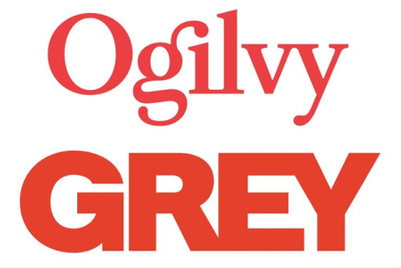
While waiting for my coffee one recent Sunday, I was flicking through the paper when this line caught my eye. It was an excerpt from a rousing speech from a local creative director and nominated Member of Parliament, Kuik Shiao-Yin. She was calling on Singapore to ‘unlearn old habits and take their education into their own hands in the pursuit of innovation’, arguing that if Steve Jobs hadn’t studied calligraphy at 22, Apple would never of had the aesthetic sense that differentiates it from its competitors. With ‘innovation’ such a buzzword in the industry, and every brand, product and marketer claiming their ‘product’ to be innovative, it got me thinking:
What do we need to do to unlearn in our industry to truly innovate in 2015?
At iris, we’ve been fascinated by the notion of innovative and genuinely participative brands for a while now. And recently we set out to explore how they drive performance in a proprietary multinational study (the Participation Power Index). The study, which is set to launch in the next month or so, ranges across multiple markets and multiple categories and reveals that you don’t have to be a disruptive technology innovator, for example, to be truly innovative.
Our ambition was to identify how, through the interplay of Ideas, Innovations, Culture, Platforms and People, brands from many different categories are finding smarter ways to participate more visibly and vibrantly in the flow of consumer lifestyles; to make the leap from being just another credible option in an overcrowded category, to being a vibrant feature of how the world works these days.
And in order to do that, there are some marketing ‘truths’ that I believe we need to ‘unlearn’ as an industry. And fast. They are as follows:
1) ‘We must be always on’
28 posts a week, 80 likes a day, buy or not to buy—what’s a brand to do? Brands are investing heavily to ensure that they have an ongoing social presence, content and service. But does it really matter when in any given week, less than .05 per cent of fans are engaging with the brands they are fans of?
What really is important is being right now. Being two hours late to the party is too late, everything relates to the moment and events happening right now. That also means creating the ‘brand in hand’ occasions that create real buzz. It’s a tactic we have been employing for Heineken in Singapore for the last few years, from experiences where you can ‘smell the music’ to the design of the bottles that only reveal their secrets on the dancefloor.
2) ‘Data Kills Creativity’
There seems to be a belief that creative agencies can’t also be data-led because it ‘dampens’ the creative output. I think if that is the case in 2015, then your agency is it doing it wrong.
Data is a great enabler. It allows us as agencies to get away from the ‘race to the bottom’ with procurement and become real partners with our clients. It allows us to be able to create our own opportunities that are built on commercial rigour, and then optimise as you go.
Most importantly, marketers need to stop looking at data as a crutch and see it as a creative tool. This means a move away from rigid single-minded structures to more agile participation platforms.
3) ‘Consumers make trade-offs when choosing a brand in a specific category’
Cheap and fast? Durable and cheap? Luxury and popular? Modern but authentic? Sounds like a bad proposition on a creative brief doesn’t it?
But that’s exactly the expectations of today’s consumer. To borrow a phrase from the author of Eating the Big Fish, Adam Morgan, ‘we are entering the stage of the unreasonable consumer.’ It’s an expectation, not a luxury. It’s why Alibaba continues to dominate, yet still takes the time to innovate. It’s what’s enabled GrabTaxi to transform the Singaporean taxi industry. It’s why luxury hotels are losing out to Airbnb.
4) ‘Always appeal to the many’
One of the most surprising findings of our study was that the brands that were seen as ‘the hottest right now’ were also the most polarising. That is, category killers such as Beats, Louis Vuitton and Red Bull, which are commercial successes, were also the most hated at points.
That’s because they dared to be provocative, creative and not afraid to ‘ruffle a few feathers’.
It’s a tactic we have employed for our latest campaign for Adidas in #therewillbehaters—16 million views and counting, which smashed its KPIs in a couple of weeks of launch. Daring to be hated, or daring to appeal to the few rather than the many, and daring to polarise opinion is a brave and smart marketing move—when appropriate for the brand. Although, the ‘collective culture’ of some Asian markets does mean that you have to proceed with caution.
In an era where 100 hours of content are being uploaded every minute, how are you going to be noticed?
Unlearn these lessons that no doubt many a marketer will have had drilled into them by people who grew up in different times. There is a new, participative age of marketing upon us, and the opportunity to do things differently, in a new form of ‘right’, has never been more exciting.
See you on the other side.
Luke Nathans is CEO of Asia-Pacific for iris.



.jpg&h=334&w=500&q=100&v=20250320&c=1)

.jpg&h=334&w=500&q=100&v=20250320&c=1)
.jpg&h=334&w=500&q=100&v=20250320&c=1)

.jpg&h=334&w=500&q=100&v=20250320&c=1)
.jpg&h=334&w=500&q=100&v=20250320&c=1)
.jpg&h=334&w=500&q=100&v=20250320&c=1)






.jpg&h=268&w=401&q=100&v=20250320&c=1)

